07 July 2025
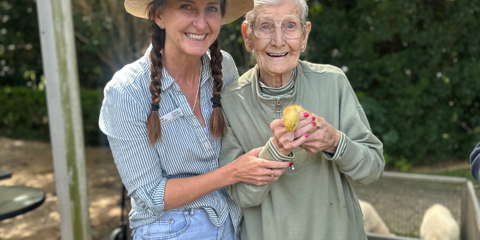
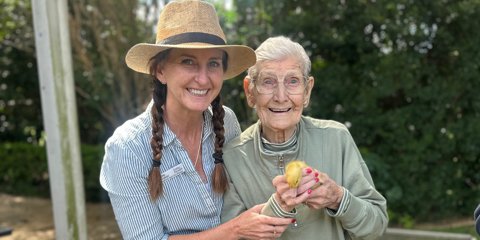
At Estia Health, some of our most loved residents and visitors have four legs, fur, and an uncanny ability to bring joy to our homes.
At Estia Health, some of our most loved residents and visitors have four legs, fur, and an uncanny ability to bring joy to our homes.
Across our homes, animal companionship is recognised as an essential component of wellbeing for our residents. Whether through permanent pet residents, regular therapy animal visits, or special animal events, every home embraces the healing power of animals. From cats and dogs to more unusual visitors like kangaroos and farm animals, these special interactions create moments of joy, purpose, and connection.
We’re sharing some of the extraordinary bonds between our residents and their animal companions.
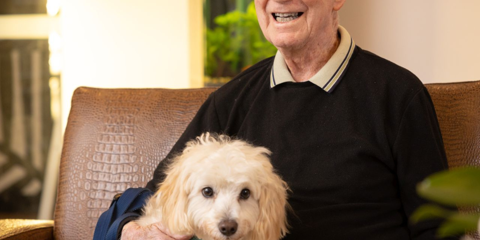
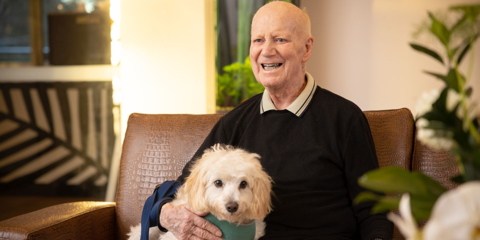
The watchful guardian: Archie of Epping
In our dedicated Memory Support area at Estia Health Epping NSW, lives an eight-year-old Poodle cross named Archie. With his gentle demeanour and intuitive nature, this special dog has transformed everyday life for residents since arriving as a puppy eight years ago.
His presence brings a unique warmth, intuitively understanding what each resident needs – a gentle nuzzle for someone feeling low, playful energy for those needing stimulation, or simply a warm body to rest beside during quiet moments. What's remarkable is his ability to recognise who is new to the home. When employees or regular visitors enter the Memory Support space, Archie approaches warmly for a friendly pat. But when unfamiliar workmen or new visitors arrive, he alerts the team with a protective bark, his own special way of watching over our residents.
From morning playtime in the courtyard to afternoon walks, Archie’s days are filled with purpose. His popularity is undeniable with a regular activity called “walk in the park with Archie,” which encourages physical movement outdoors, while the wait list for his one-on-one room visits speaks to the joy and calm he brings.
For those in the Memory Support area, where time sometimes loses meaning, these predictable, joyful interactions become anchoring moments in their day.
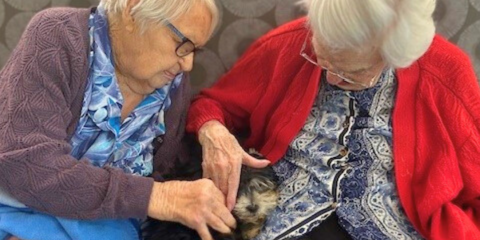
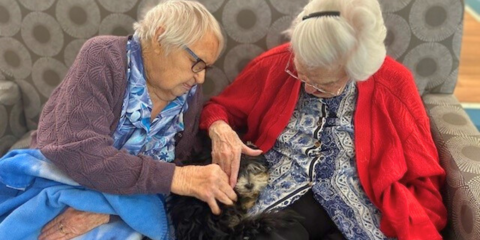
Kadina’s cuddly companion: Kesta
A puppy named Kesta (short for Kadina Estia) brings playful energy and a reliable presence that residents adore.
This lovable furry friend quickly became an essential part of life in our home, visiting residents in their rooms, curling up quietly on beds beside those wanting company, and accompanying those able on daily strolls – an activity that has noticeably improved mobility and physical wellbeing for many of our residents.
Residents light up when helping with his feeding, grooming, and walking. This responsibility rekindles a sense of purpose that is especially meaningful for residents who once cared for pets or children of their own.
During special events, Kesta loves to be dressed up and families often ask if they can have some time with Kesta while visiting loved ones.
While our home maintains thoughtful boundaries, Kesta knows that mealtime areas are off-limits, his freedom to explore throughout the day ensures that his gentle presence touches everyone.
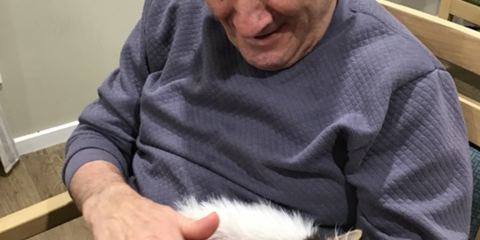
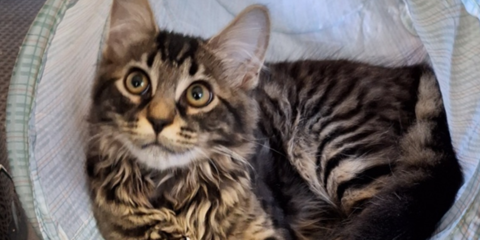
Meet Smokey: a small soul with big impact
In November 2024, we welcomed Smokey, a kitten, into our Epping VIC home – a decision not made lightly. Residents were thoughtfully consulted about what type of animal they would feel most comfortable with in their home, with many expressing a desire for a kitten. Since his arrival, Smokey has made a remarkable difference in our home.
His playful energy and sweet companionship have encouraged residents to engage in more social behaviours, from smiling, laughing, to making eye contact and initiating conversations. For residents who have become socially withdrawn, interacting with Smokey has helped ease feelings of apathy and even reduce signs of agitation.
For those with limited verbal communication, Smokey provides a gentle way to express emotions and feel seen through cuddles or simply sitting with them. Caring for him gives residents a renewed sense of purpose, with many taking pride in helping feed, groom and care for him each day.
Smokey often joins our lifestyle team during reminiscence activities, offering a soothing presence that helps stimulate long and short-term memory, especially for residents who once had pets of their own.
While Smokey doesn’t join residents in the dining area, his yard sits just next to it, allowing residents to watch him play while enjoying their meals.
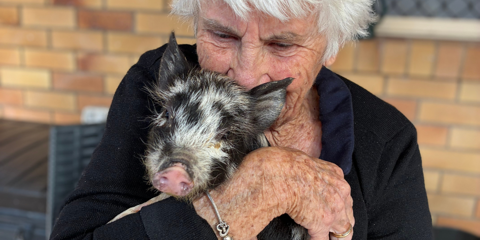
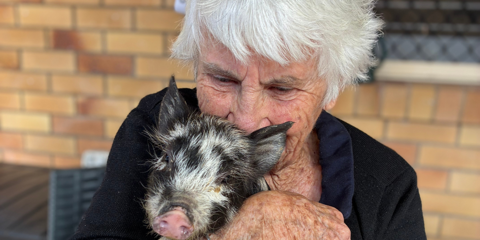
Animal connections beyond permanent pets
Not all our homes have permanent four-legged residents, but the therapeutic benefits of animal interactions are still prioritised through creative alternatives. Regular pet therapy programs and animal visitors, from farm animals to reptiles, give residents something to look forward to.
Our Lifestyle Manager, Trudy, occasionally brings special animal guests into our homes, including Marilyn the kangaroo and Tadaisies the Alaskan Malamute. These experiences stimulate cognitive function through the introduction of new sensory inputs and create moments of wonder and excitement.
Beyond the immediate joy, it also sparks memories from our residents, with many sharing stories from their childhood of past pets.
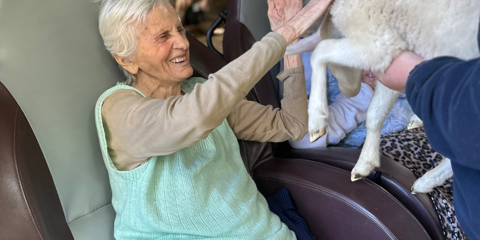
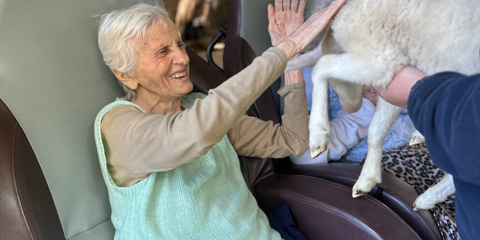
The science behind the smiles
The benefits of animal interactions go far beyond visible smiles and laughter. Research has shown that animals help counteract social withdrawal, reduce negative emotions, and stimulate memory, while also positively helping with changed behaviours as a result of dementia.
For residents in the early stages of dementia, activities like walking, stroking, or brushing pets offer sensory stimulation that grounds them in the present moment. For those with vision or hearing challenges, petting an animal provides a special form of connection.
In our homes, employees report the same observation: animals aren’t just visitors or pets, they are an extension of our care team. They sense when a resident is having a difficult day. They know who needs extra attention and bring spontaneity to our homes. They remind us all that care comes in many forms, and for our homes, every day with our animal friends is a celebration of connection and unconditional love.
